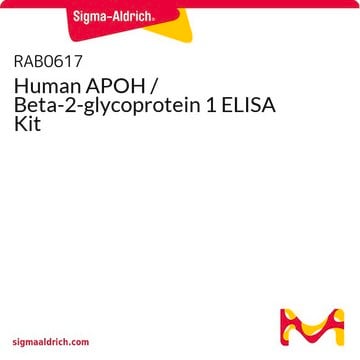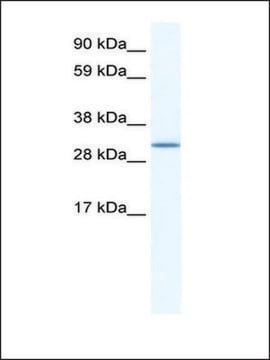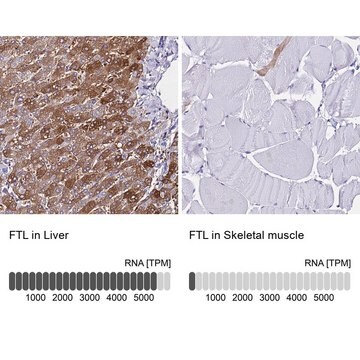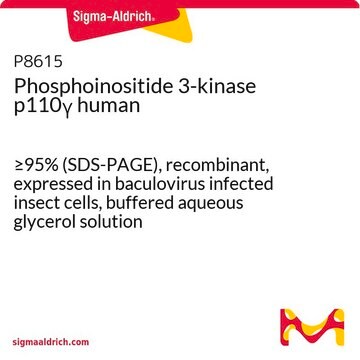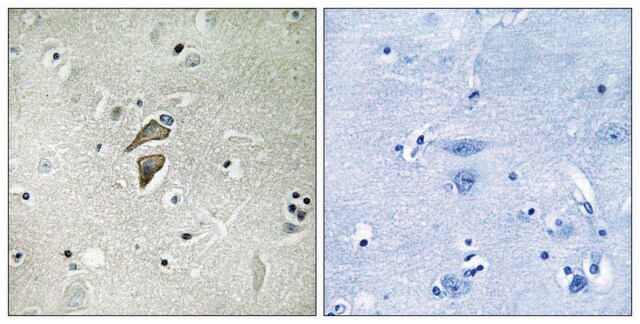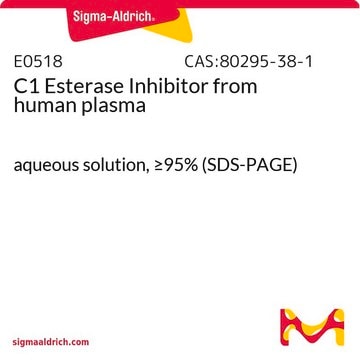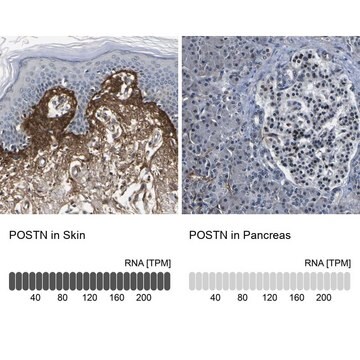MAB1820
Anti-Scribble Antibody
clone 7C6.D10, Chemicon®, from mouse
Synonym(s):
Scrib, LAP4
Sign Into View Organizational & Contract Pricing
All Photos(1)
About This Item
UNSPSC Code:
12352203
eCl@ss:
32160702
NACRES:
NA.41
Recommended Products
biological source
mouse
Quality Level
antibody form
purified antibody
antibody product type
primary antibodies
clone
7C6.D10, monoclonal
species reactivity
human
manufacturer/tradename
Chemicon®
technique(s)
western blot: suitable
isotype
IgG1κ
GenBank accession no.
UniProt accession no.
shipped in
wet ice
target post-translational modification
unmodified
Gene Information
human ... SCRIB(23513)
General description
Scribble is a tumor suppressor marker first discovered in Drosophila that has been implicated in the control of cell proliferation, polarity, invasion, and metastasis (Humbert, et al, 2003). Mammalian Scribble expresses basolateral staining in epithelial tissue and highly polarized expression in T lymphocytes (Dow, et al, 2003) (Ludford-Menting, et al, 2005), and plays an essential role in the regulation of the polarity specifically involved in directed epithelial migration. Altered expression of human Scribble is associated with invasive epithelial cancers, however, its role in tumour development remains unclear (Dow, et al, 2007).
Specificity
Predicted to cross react with mouse based on sequence homology. Reactivity with other species has not been tested.
Immunogen
Epitope: PDZ2 domain of Scribble
GST-tagged fusion protein corresponding to the PDZ2 domain of Scribble
Application
Suggested dilutions:
Western blot: 0.2 µg (1:2000)
Western blot: 0.2 µg (1:2000)
Research Sub Category
Tumor Markers
Cytoskeleton
Tumor Markers
Cytoskeleton
This Anti-Scribble Antibody is validated for use in WB for the detection of Scribble.
Quality
Routinely evaluated by Western blot on HeLa cell lysates.
Target description
220 kDa
Physical form
Format: Purified
Purified in PBS containing with 0.05% NaN3.
Storage and Stability
Maintain at 2-8°C for up to 1 year after date of receipt.
Other Notes
Concentration: Please refer to the Certificate of Analysis for the lot-specific concentration.
Legal Information
CHEMICON is a registered trademark of Merck KGaA, Darmstadt, Germany
GenBank is a registered trademark of United States Department of Health and Human Services
Not finding the right product?
Try our Product Selector Tool.
Storage Class Code
12 - Non Combustible Liquids
WGK
WGK 2
Flash Point(F)
Not applicable
Flash Point(C)
Not applicable
Certificates of Analysis (COA)
Search for Certificates of Analysis (COA) by entering the products Lot/Batch Number. Lot and Batch Numbers can be found on a product’s label following the words ‘Lot’ or ‘Batch’.
Already Own This Product?
Find documentation for the products that you have recently purchased in the Document Library.
I F Bambang et al.
Oncogene, 32(10), 1240-1251 (2012-05-01)
The epithelial-mesenchymal transition (EMT) correlates with disruption of cell-cell adhesion, loss of cell polarity and development of epithelial cell malignancy. Identifying novel molecules that inhibit EMT has profound potential for developing mechanism-based therapeutics. We previously demonstrated that the endoplasmic reticulum
Sang Joon Won et al.
ACS chemical biology, 13(6), 1560-1568 (2018-05-08)
S-palmitoylation is required for membrane anchoring, proper trafficking, and the normal function of hundreds of integral and peripheral membrane proteins. Previous bioorthogonal pulse-chase proteomics analyses identified Ras family GTPases, polarity proteins, and G proteins as rapidly cycling S-palmitoylated proteins sensitive
Our team of scientists has experience in all areas of research including Life Science, Material Science, Chemical Synthesis, Chromatography, Analytical and many others.
Contact Technical Service